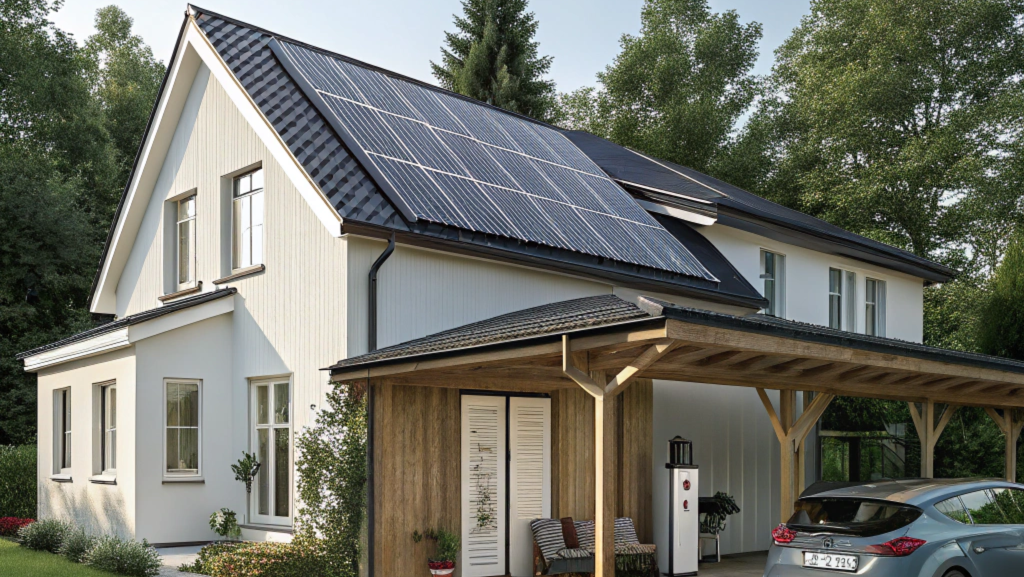After rain or snow, the surface of solar panels is prone to retain moisture, dirt or form ice layers, which affects the power generation efficiency and may even cause safety hazards. Therefore, timely and correct cleaning is particularly important. The following are the matters that need special attention during cleaning:
First, safety protection and inspection
Wait for the right moment:
After rain or snow, the surface of the solar panels may become slippery or icy. It is necessary to wait for the weather to clear up, the surface to dry or the ice to melt before cleaning to avoid the risk of slipping or falling.
Before cleaning in winter, it is necessary to confirm the ambient temperature to prevent operators from suffering frostbite or operational errors due to low temperatures.
Structure and circuit inspection
Check whether the battery panel brackets and frames have become loose, deformed or corroded due to rain or snow. If any abnormalities are found, they need to be repaired first and then cleaned.
Make sure that the connecting lines and joints are free from damage or water accumulation to prevent short circuits or electric shock.
Tools and protective preparations:
Use protective equipment such as anti-slip shoes, safety belts and insulating gloves to ensure operational safety.
The cleaning tools should be soft (such as sponges, soft brushes) to avoid scratching the surface of the solar panels.
Second, cleaning steps and techniques
Clear snow or ice:
If the solar panels are covered with snow, first use a soft plastic shovel or rubber scraper (avoid metal tools) to gently remove the snow to prevent scratches.
When the ice layer is thick, it can be slowly melted with warm water (not hot water), or a professional de-icing agent (it must be confirmed that it is non-corrosive to the solar panels) can be used. It is strictly forbidden to strike with hard objects.
Remove residual moisture and dirt:
Rinse the surface of the solar panels with clean water to remove impurities such as sand and leaves. If the water quality is relatively hard, it is recommended to use softened water or purified water to avoid scale residue.
Gently wipe along the grain direction with a soft sponge or microfiber cloth. For stubborn stains, repeat the operation. Avoid pressing hard or rubbing horizontally.
Edge and crevice cleaning
The edges of the solar panels and the gaps in the brackets are prone to accumulate dirt. It is necessary to clean them with a fine and soft brush or cotton swab to prevent long-term accumulation from affecting heat dissipation or causing corrosion.
Third, handling of special circumstances
Operation in low-temperature environment
When cleaning in winter, the time of each operation should be shortened to avoid the cleaning agent or water freezing at low temperatures, which may cause secondary pollution or damage to the solar panels.
After cleaning, thoroughly dry the surface moisture to prevent freezing at low temperatures at night.
Avoid electrical risks:
During the cleaning process, it is strictly prohibited to directly spray water on the back of the solar panel or the junction box to prevent short circuits in the circuit.
If cracks or damages are found on the surface of the solar panel, stop using it immediately and contact a professional for repair.
Fourth, post-cleaning maintenance and monitoring
Power generation efficiency monitoring
After cleaning, the power generation efficiency of the solar panels needs to be monitored. If there is no significant improvement, it is necessary to check whether there are shadow obstructions, component aging or other faults.
Regular maintenance plan:
The cleaning cycle should be determined based on local climatic conditions. In areas with frequent rain and snow, the cleaning interval can be shortened to ensure the long-term efficient operation of the solar panels.
Fifth, other precautions
Avoid using corrosive cleaners:
It is strictly prohibited to use cleaning agents containing acids, alkalis or abrasive components to prevent corrosion of the surface coating or sealant of the solar panels.
Prevent secondary pollution:
During the cleaning process, it is necessary to promptly clear the sewage on the ground to prevent mud and sand from splashing onto the solar panels again.
Recording and Feedback
Record the cleaning time, methods and problems found to facilitate the subsequent optimization of the maintenance process.


